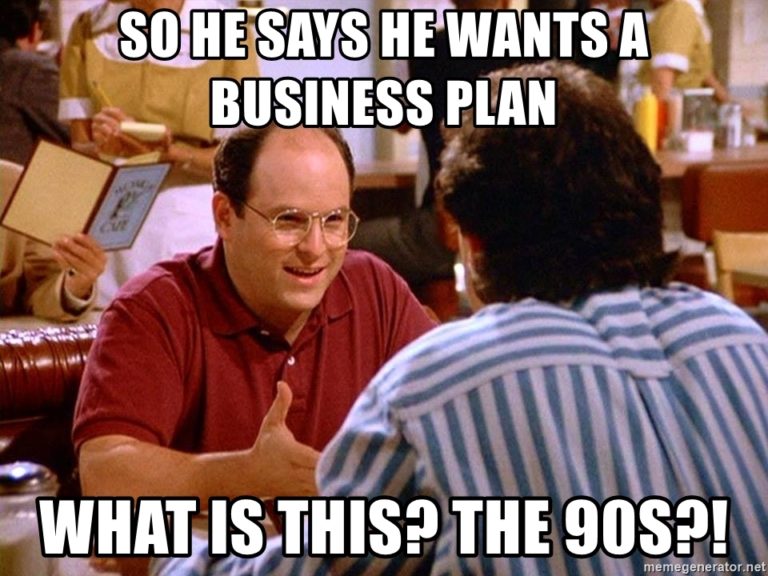It has been standard procedure for entrepreneurs to write out long business plans before starting or testing a business. There are many flaws with this strategy up front.
If you are writing a business plan right out the gate, then you should seriously reconsider for more than a few reasons. For one, they take a ridiculous amount of time to write out. Some people often report to a board or investors with business plans that are 50 pages long. If one piece of information is wrong, inaccurate, or doesn’t work, then you have to flip through 50 pages of planning to find what you want. Not only is this a massive waste of time, but if it doesn’t work, then you have to re-write your business plan from scratch. There is a myriad of things that can go wrong with these plans from birth to a couple of weeks or even days in. Elon Musk also said at SXSW last year that he no longer writes business plans because they “never work out.” I have experience writing out a long extraneous business plan describing every part of the business, and for lack of a better phrase, it sucks. However, what if I told you there is a better way to go about business planning in general?

The business model canvas (BMC) is a fantastic alternative to this long boring packet of over conveyed information we call the business plan. If you haven’t heard of it, it is becoming an ever more popular system for thinking out new business ideas in incubators, various entrepreneurial curriculums, lean, entrepreneurial environments, and millions of companies worldwide. It merely holds 12 of the main areas of your business or start-up and can be broken down or reworked as needed. Next, you can then go out an test this model and make hypothesis’s about the problem and solution of your business. Testing your BMC and hypothesis is a post for another time, but it primarily revolves around figuring out if the market you are trying to enter is saturated, if the customer of existing alternatives are happy, or just general information about the problem or your solution. However, if you are wrong in your assumptions of what you think the problem and potential solution you can make changes, pivot, or iterate your business model. Not only are you saving an uncanny amount of time that could be used otherwise, but you erase the majority of the hassle of days or weeks of writing a complicated business plan to present.
*You can find many different models of the BMC on the internet. I suggest Ash Murray’s BMC in the book running lean or one similar to the one above. Also a good replacement for the “unfair advantage” section is “customer relationships”.*
Some of these may be self-explanatory but here is a quick rundown of the areas outlined on the average BMC:
Problem – What is the pain problem, or need that you’re solving? Provide a list or description. Be specific and try to niche down on your question.
Existing Alternatives – Who has identified and solved this problem already? What was their version of a solution? Provide t minimum a list, but I suggest going into a little more detail about the details of the existing alternatives.
Solution – What is your answer to the problem at hand. (Pretty self-explanatory).
Key Metrics – How will you measure success or failure? This may be metrics and stats on a website, or inventory/ product sold, etc.
Unique Value Proposition (UVP) – What makes your business and product different than existing alternatives, things already in the market, or strategy’s already tried in the market.
High-level Concept -Mainly used as a key concept understanding section.
Customer relationship – *This section can replace unfair advantage in the image above.* Essentially how are you going to communicate to your customer and what makes the most sense for your business model?
Channels – How are you going to distribute product and info to your customer?
Customer segments – Who is going to be buying your product? What demographics? Be specific and niche down here as well.
Early adopters – Who are the first people to try your product? Why? Demographics?
Cost structure – What are expenses going to look like? Possible start-up costs/ fixed vs. variable costs?
Revenue streams – How are you going to generate revenue? What are your users or customers going to pay for your product?
Some of these sections can be outlined here in the BMC and be more detailed in another document; however, this is supposed to be a solid overall outline that you keep iterating for your business. For example expenses and revenue stream may have to be projected in a spreadsheet but this provides an excellent starting point.
Overall, this model should provide more value than a long extraneous business plan. I highly suggest this model over the traditional, outdated model. Let me know what you think of the BMC!
